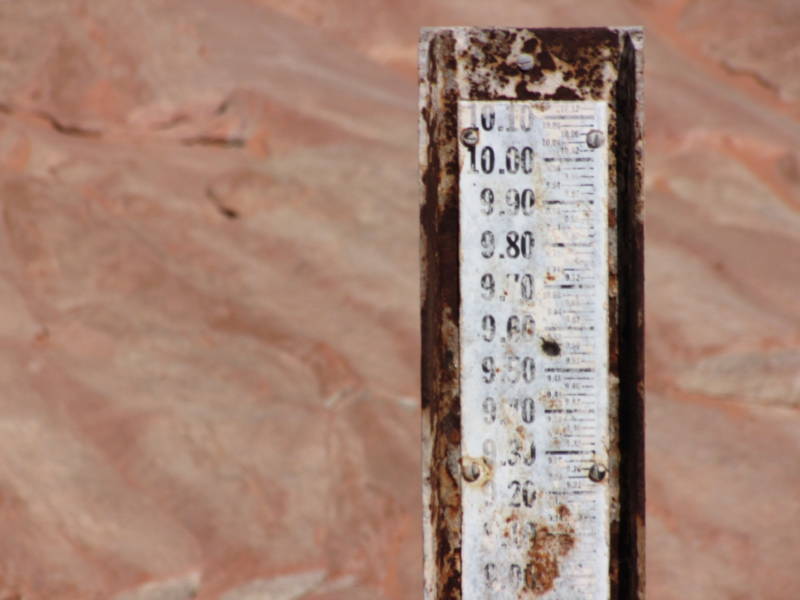
People have been talking about “peak oil” for decades now, debating when oil production will peak and then start to decline as remaining resources become scarcer and harder to access. Less attention has been given to the idea of “peak water,” which is the subject of a new analysis by the Oakland-based Pacific Institute. The concepts of peak oil and peak water aren’t entirely analogous for a number of reasons, not the least of which is the fact that, overall, water is a renewable resource. But there are limits to what water is renewable, and how fast supplies recharge. While the world is not going to run out of water, the report authors argue, in parts of the world including the southwestern US, we’re likely long past the point of peak water. That matters a lot, said study co-author Meena Palaniappan, because unlike oil, which is shipped across the world, water is still a local and regional issue.
“We’re not going to run out of water,” said Palaniappan, “but we’re going to see a change. We’re at the end of cheap, easy access to water. We’re going to have to go further, pay more, and expect less in terms of fresh water.”
The report divides peak water into three types: peak renewable water, the total annual supply of water from sources such as rainfall, rivers, and groundwater sources that are refilled relatively quickly; peak non-renewable water, which includes groundwater aquifers that either do not refill or do so extremely slowly; and peak ecological water, past which, the value of ecological services provided by water is greater than the value it provides in direct human services. Or simply, it’s the point where taking water causes more ecological damage than it’s worth.
“The goal is to find the sweet spot, where we can maximize the human value water provides as well as the ecological value,” said Palaniappan.
In the western US, we are definitely past peak ecological water, said Palaniappan. As evidence of this, she cited the Central Valley aquifer, which is being pumped down far faster than it can recharge and the Colorado River, which supplies Southern California with much of its water, and no longer reaches the ocean most years because every drop of it is appropriated for human use.
Last week, I was in Salt Lake City to talk with Terry Fulp, the Bureau of Reclamation‘s Deputy Regional Director of the Lower Colorado Region. He said that after 10 years of drought on the Colorado, each of the seven states that draw from it are still getting their allotted water supply, and the reservoirs are about half full. The Colorado River system, which supplies water to more than 30 million people, has a huge storage capacity, equal to four times the river’s annual flow, Fulp said. But increasing demand due to the drought and to population growth have the Bureau looking ahead at the challenges the system may be facing in the not-too-distant future.
“The supply and demand curves basically have crossed,” said Fulp. “If you look over the last 100 years, the water supply has been above the demand, but demand has been growing, and essentially, today they have met. We’re operating on a tight margin, a very tight margin, so the question is about projecting what we think the future will look like twenty years out.”
Like Palaniappan, Fulp says that conservation is critical and may become increasingly so in the near future. But even so, he said he doubts the demand for Colorado River water is going to decrease. The supply may, however. Long droughts are common in the paleorecord, and water managers are planning for an additional 10-15% reduction in flow due to the effects of climate change. This matters a great deal in a system where just about every drop is spoken for. Fulp says that developing methods for accessing new water supplies, such as groundwater and desalinization plants, needs to be central to a long-term water management strategy for the region.
One thought on “Has the Southwest Passed “Peak Water”?”
Comments are closed.

The Earth has an excellent chance of stabilising between 700 and 900 ppm CO2 within one thousand years from now.Scientific data is available to show you what an 800 ppm CO2 world will look like.Take a look.Also, take your idea of how scarce water will be 40 years from now and quadruple the severity.